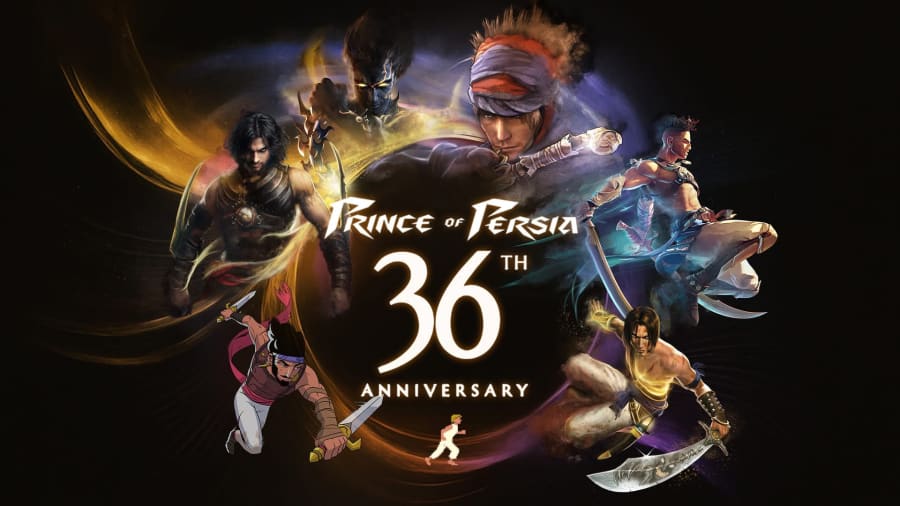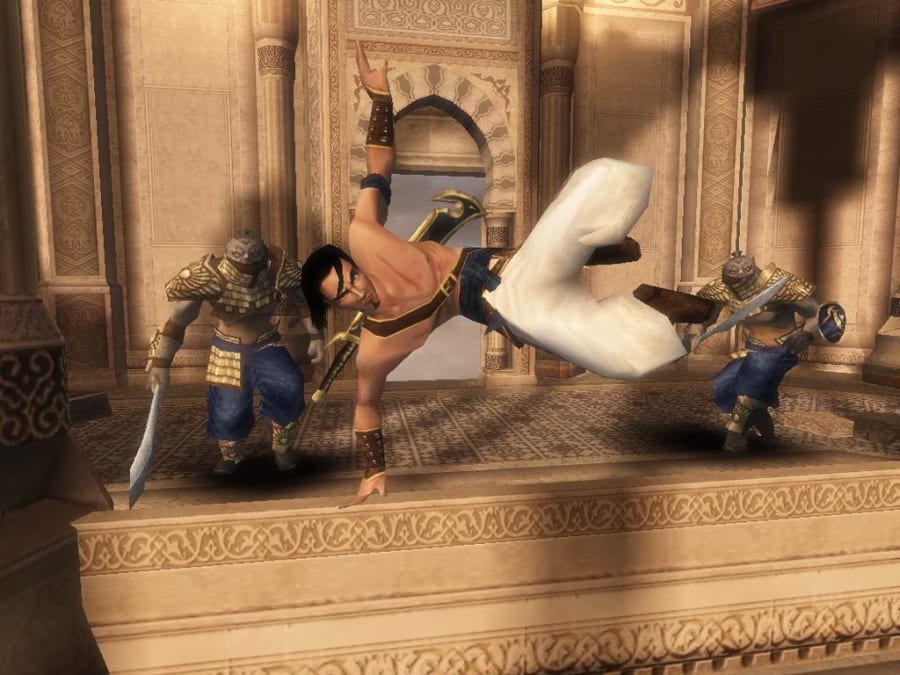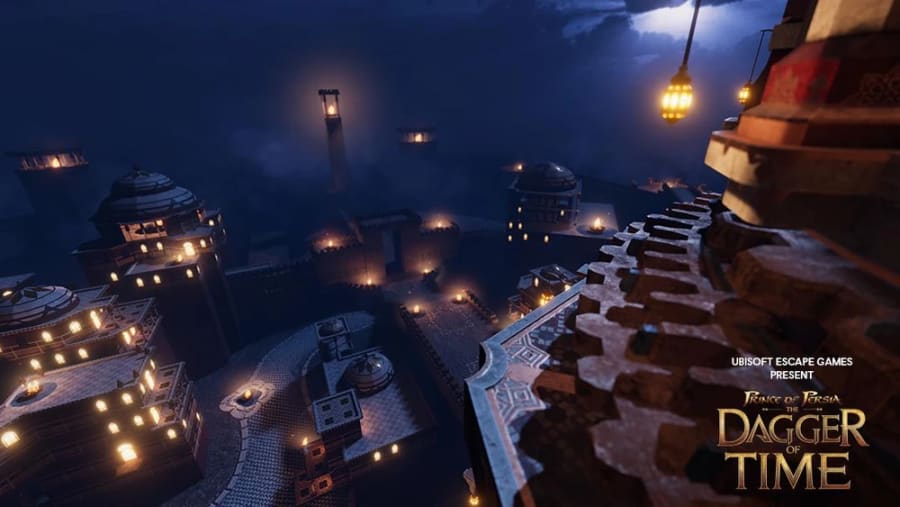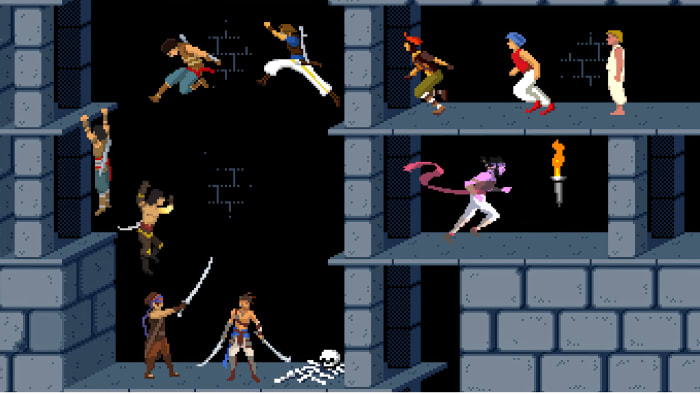Prince of Persia & Me — Disks, Daggers and Decades of Wall-Running Joy
Short version: I first met the Prince in 1993 on a beige PC that wheezed like a desert bellows. Since then I’ve owned (or played within months of release) almost every major incarnation: floppies (5.25" B: then 1.44MB A:), the ambitious-but-wonky 3D era, the silky Sands of Time trilogy, the painterly 2008 reboot, the elemental return of The Forgotten Sands, VR puzzling with The Dagger of Time, up to today’s stylish modern revivals. This is a player’s travel diary — light, fun, a little dusty with nostalgia.

1. 1993: Rotoscoped Awe on Floppies
My origin story actually starts after the original 1989 release: 1993, a hand‑me‑down PC, and two drives: B: 5.25" and A: 1.44MB. Installing felt like a mini‑puzzle: Insert Disk 1… now Disk 2… . Me and my brother had to figure out some guessed words on page numbers given on screen to get to start the game. Keeping those floppies clean and bend-less was our highest priority.
What hooked me? The movement. The rotoscoped animation (Mechner famously used his brother as the model) made the Prince feel deliberate. Jumps weren’t floaty; they were timed like small theatre stunts. Spikes? Brutal. The best thing was to hear the background music and we used to listen to it with our 14 inch and later 17 inch CRT monitors off, speakers on and while one of us is doing work the other one takes turn to end a level we are stuck on. We had only 16 colours but the thrill was continuous.
Why it mattered: It taught me that feel beats raw polygon count. Precision + animation = immersion.
2. Shadow & the Flame → Expanding the Myth
Owning Prince of Persia 2: The Shadow and the Flame felt like getting a director’s cut. Bigger vistas, nastier traps, more story flair. The challenge curve sharpened; my patience (and save-scumming) grew with it. The music was still soul capturing. These early games rewarded pattern learning — proto‑soulslike persistence, minus the dodge roll.
3. 1999’s 3D Leap (Prince of Persia 3D) — Ambition vs Reality
Then along came Prince of Persia 3D. I wanted to love it. True 3D! Swashbuckling potential! What I got: camera wrestling, control molasses, and bugs that turned noble leaps into face‑plants. Still, I remember the feeling of a beloved 2D space daring to rotate. It’s a lesson: technological transition years are awkward teenagers — goofy, experimental, vital. This was the time I was learning about 3D Studio Max, Maya and what not. Upgraded to 20GB hard drive and CD-ROM and DVD Era. I played less but in these years but focused more on how game developers think and compare it with Need for speed, Fifa, Paranoid, Black and White and few other games of that time.
4. 2003: The Sands of Time — Instant Classic Status
Enter grace. Prince of Persia: The Sands of Time (2003) is where I truly fell back in love. I bought it within months of release and finished it with that rare "I could restart immediately" energy. With so many torrents and high quality DVD download this era was truly web based. I moved to UK and started playing it on a wide monitors with better sound quality.
Why it sung:
- Rewind mechanic: Friendly to failure; experimentation invited.
- Parkour flow: Wall‑runs, vaults, poles — a graceful grammar of movement.
- Tone & narration: Storybook framing, witty asides (“No, wait, that’s not how it happened…” after a death) — diegetic checkpoints before it was trendy.
- Puzzle rhythm: Combat → traversal → spatial riddle — repeat without fatigue.
It aged better than many contemporaries because it married mechanics to fantasy: the dagger isn’t a gimmick; it defines pacing.

5. Warrior Within & The Two Thrones — Edgy Pivot, Then Balance
Warrior Within (2004) showed up in black eyeliner blasting metal riffs. I played it close to launch, puzzled but intrigued. The combat depth improved; the tonal shift — less whimsical, more brooding — spent less time on this to be honest.
The Two Thrones (2005) corrected course: a hybrid of the first game’s warmth and the sequel’s aggression. The stealth “speed kills” were my quiet obsession: elegantly compressing combat into timed inputs.
6. 2008 Reboot — Painterly Detour
The cel‑shaded 2008 Prince of Persia (I grabbed it early) was like stepping into a moving illustration. Elika’s constant companionship + fail‑state softening (she auto‑rescues you) modernised the Sands rewind ethos into seamless co‑op with an AI.
Some players felt it lacked bite; I appreciated the meditative traversal loops. It’s a comfort game to revisit — like a graphic novel you reread for the mood.
7. The Forgotten Sands (2010) — Elemental Flair & Timeline Stitching
The Forgotten Sands arrived as a sort of bridge, slotting between earlier narrative beats. I played the Xbox version months inside its release window and enjoyed the elemental powers layering onto traversal (freezing water mid‑flow = chef’s kiss). It didn’t eclipse 2003, but it reaffirmed the core grammar: environment + timing + forgiving-but-not-trivial retries.

8. Side Currents: Mobile, Classics & VR Escape
Between major beats I dabbled in Classic remakes and mobile riffs — fun palette cleansers that reminded me how tight the original design loop was.
Then came The Dagger of Time (2020) — a VR escape-room style experience. It translated the series’ signature temporal play into collaborative puzzle solving. I didn’t rewind out of a missed jump; I negotiated space and time with teammates. It felt like a respectful spin-off — the DNA expressed through a different genre lens.

9. Modern Renaissance: Lost Crown, Rogue Experiments & (Future) Remake
Recent years rekindled momentum: stylish side-scrolling precision, roguelike spins, and the long‑gestating Sands of Time remake simmering toward (hopefully) a polished 2026 arrival. The franchise now feels like a toolbox of verbs (run, wall, vault, rewind, freeze, cooperate) ready to be rearranged for new genres.
10. A Personal Timeline Snapshot
| Era | My Hardware | Format | Vibe |
|---|---|---|---|
| 1993 (OG + PoP2) | 386-486 PC | Floppies B:/A: | Rotoscope magic, timing terror |
| 1999 (PoP 3D) | Upgraded PC | CD | Ambitious, clunky adolescence |
| 2003–2005 (Sands Trilogy) | PC → Xbox | Retail discs | Flow state mastery |
| 2008 Reboot | Xbox 360 | Disc | Painterly experiment |
| 2010 Forgotten Sands | Xbox 360 | Disc | Elemental traversal flair |
| 2020 Dagger of Time | VR venue | Session | Collaborative temporal puzzling |
| 2024–2025 Modern entries | PC / Console | Digital | Heritage reinterpreted |
11. Wallpaper Nostalgia (Fan Kit Love)
Want instant serotonin? A 35th Anniversary homage wallpaper. Here’s a downsized preview — click it (open new tab) for full glory.

12. 4-Hour Epic: History Deep Dive (Video)
If you want the scholarly + documentary immersion, park this 4-hour history of Prince of Persia video below in a weekend tab, brew something hot, and time-travel properly:
13. Closing Thought
From dusty floppies to VR puzzles, Prince of Persia has been a quiet constant — teaching me that feel, flow and forgiveness outlast graphical fashion. Every wall-run is still a tiny leap of faith — and somehow, after three decades, I’m still grinning when the Prince sticks the landing.
References & Sources (Selected)
- Franchise history and game chronology (paraphrased from the Wikipedia article): Prince of Persia — Wikipedia (Creative Commons Attribution-ShareAlike; consulted 2025-10-06).
- Official Ubisoft franchise hub (release listings, fan kit, modern entries) — Ubisoft franchise page
- Ubisoft VR escape experience reference: The Dagger of Time section on Ubisoft site.
- Screenshots & artwork: UbiSoft Fan Kit and UbiSoft Cloudinary-hosted images (Prince composite, Sands of Time, Forgotten Sands, Dagger of Time, 35th Anniversary wallpaper).
- General design observations: Personal play experience 1993–2025.